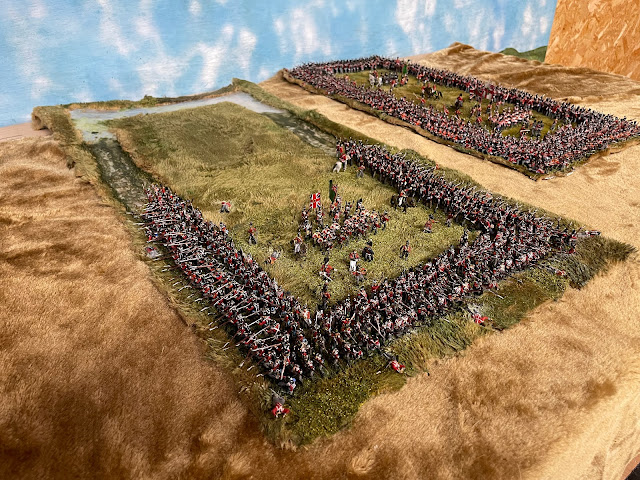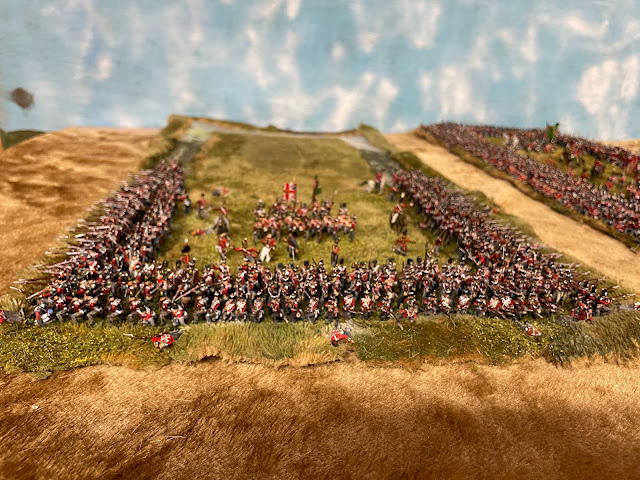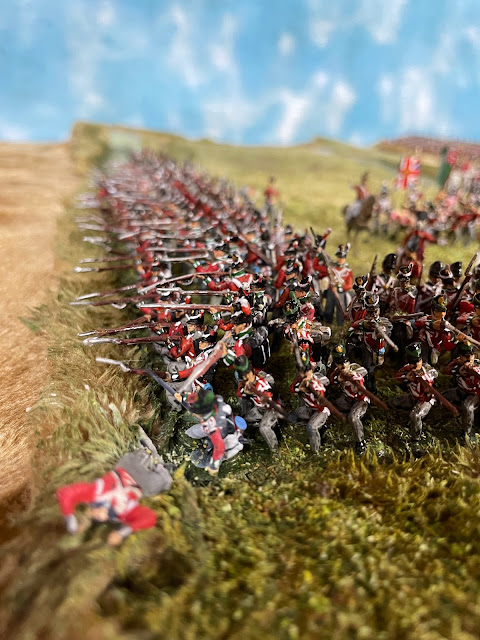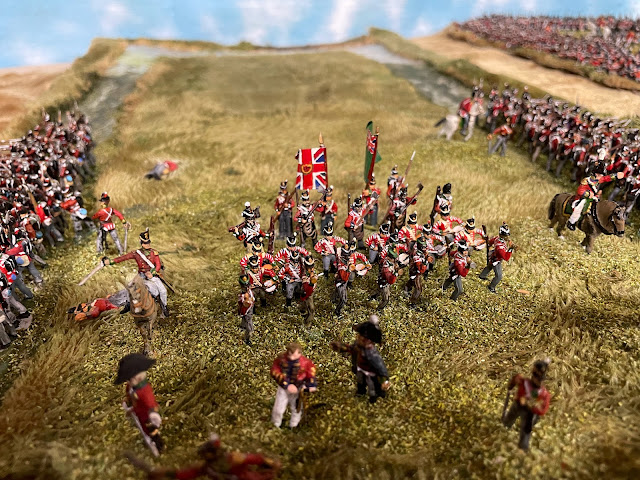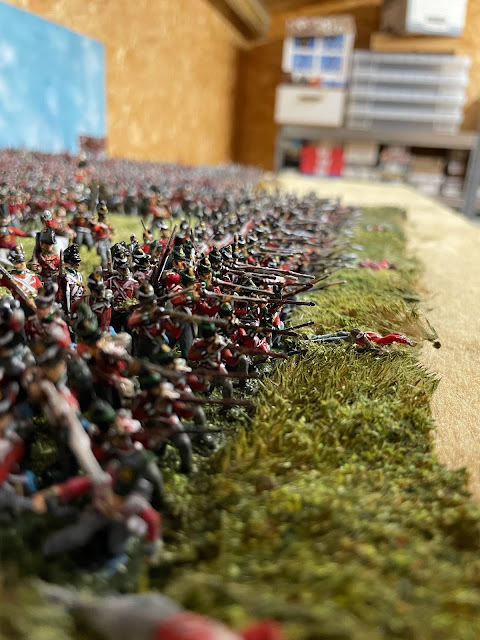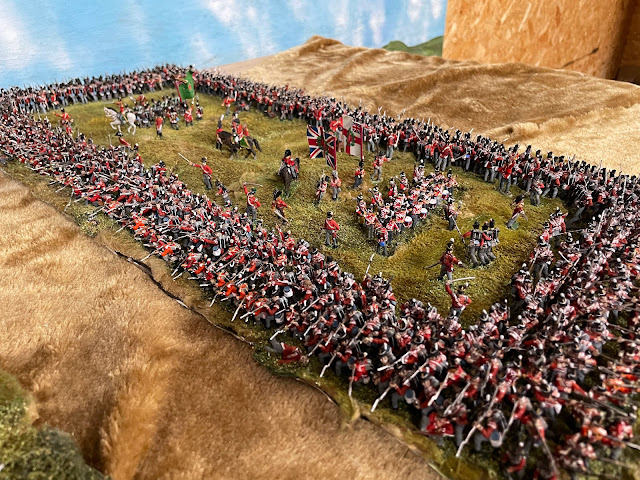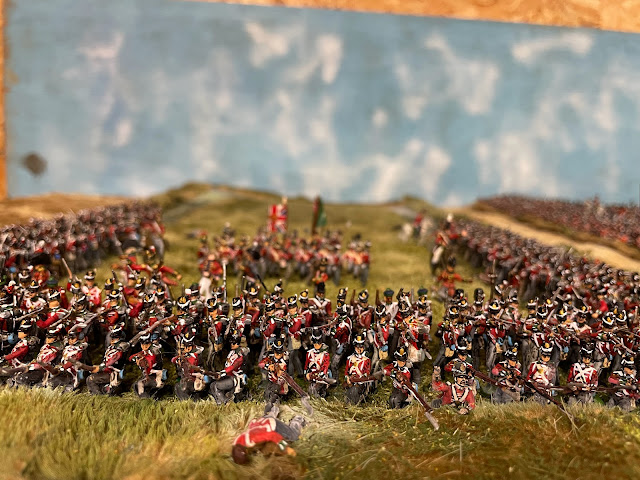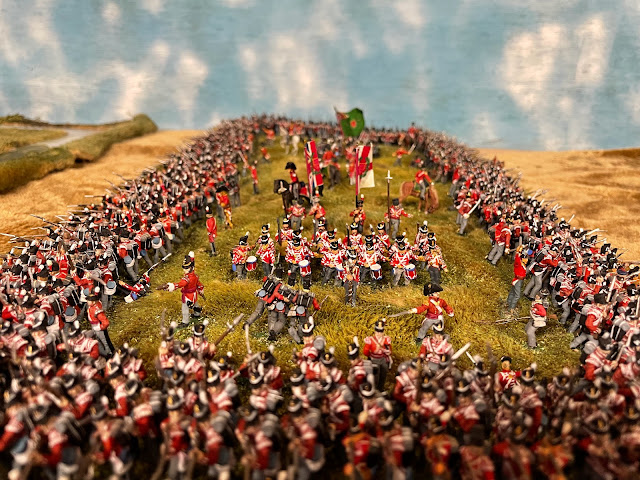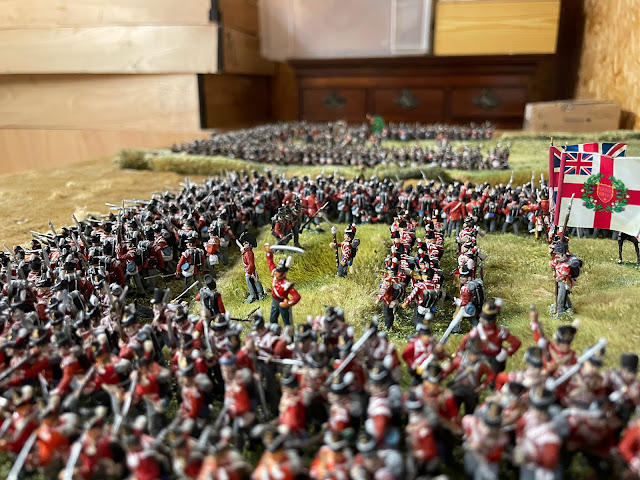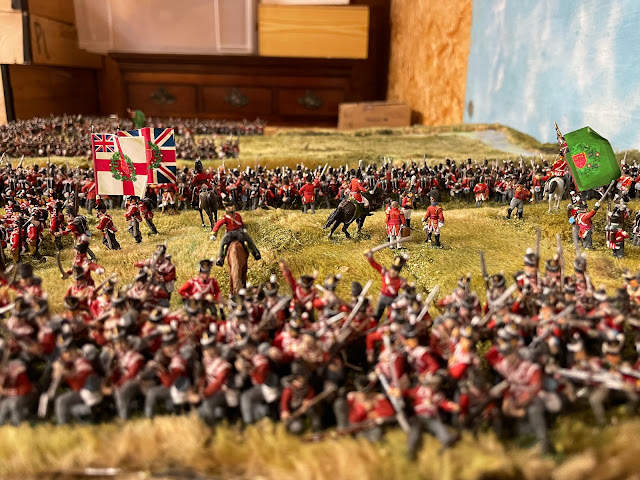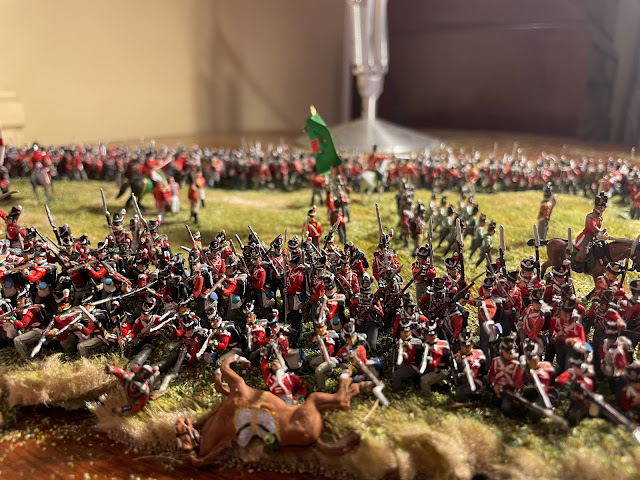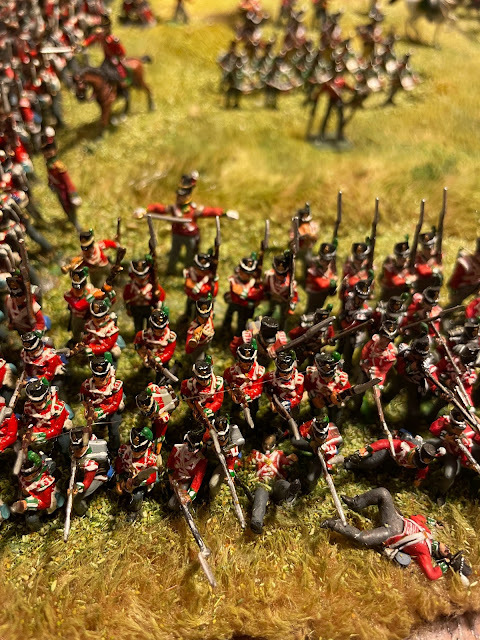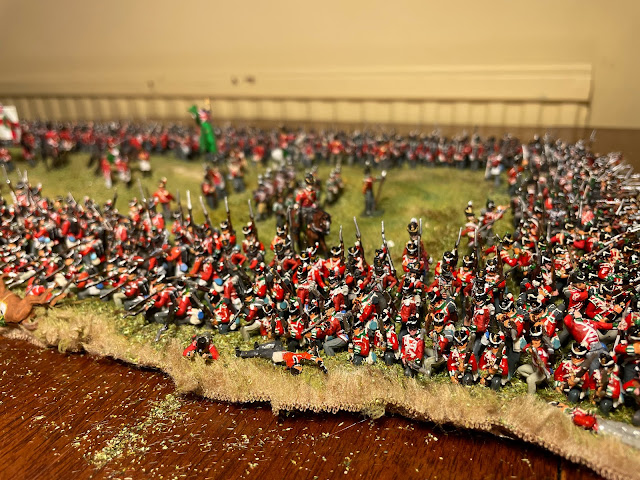The 1st/33rd (1st Yorkshire West Riding) Regiment and the 2nd/69th (South Lincolnshire) Regiment were one half of Colin Hackett's brigade and formed a double square at Waterloo (as did the other half of the brigade - the 73rd and 30th).
The 2nd/69th was one of the least experienced battalions in Wellington's army. It had been raised for service in the Low Countries and did not take part in the Peninsular War. That said, the average length of service was 3.5 years in 1815 which compares pretty favourably even with the Imperial Guard, most of whom were enlisted in 1813.
The battalion had a tough campaign, having already having come off worst in a fight with French cavalry at Quatre Bras, losing one of their Colours. During the battle, the 69th were charged by a mass of French cavalry. They attempted to form square, but two companies were caught in the open, and hacked down by French sabres.

In this slaughter, a French cuirassier cut down Ensign Duncan Keith, who carried the King’s Colour. The flag was captured and is shown in this photograph but was recovered after the French defeat later that year. The 69th suffered 38 killed and 115 wounded out of 546 men at Quatre Bras.
Things went a bit better at Waterloo for the 69th and the Regiment was granted the battle honour 'Waterloo'. The surviving ensign, George Ainslie, described his day as follows: "The Regimental Colour remaining in my charge, my station necessarily was in this place. In this manner were passed several hours during which the tremendous cannonade in almost every direction plainly told us that we had no more than out share in the business of the day. The time was only marked by the occasional striking of a shot in our square….. Among those [events] which made the strongest impression, is the grand charge of the French Cavalry, which took place in the middle of the day. After we had been exposed for hours to the heavy fire I have just spoken of, on a sudden there seemed to be a pause; and soon after rose a general alarm that the Cavalry were coming. We were quickly ready to receive them. The firing now almost ceased on both sides; the French in order not to injure their own troops; and that on our side, by the forced retreat of the guards, through the intervals of the squares. In many cases, the guns were even left; and the men and horses alone, took refuge either in in the squares or behind them. The brow of the hill was in a moment covered with Cavalry, and they then swept down, literally like a torrent, on our squares. Here is his Waterloo medal:
The 1st/33rd had a better day of it at Quatre Bras and arrived at Waterloo substantially intact. Lieutenant Frederick Hope-Pattison of the 33rd described his experience of the battle: “ …our Brigade was placed in the most trying position in which a soldier can find himself. Held in reserve except in resisting repeated charges from the French cavalry, which we inevitably repulsed, we were yet exposed to the destructive fire of artillery which occasioned many casualties”.
The 33rd fought off four successive cavalry charges, each one resulting in heaps of dead and dying men and horses littered in front of the squares. In the intervals between these attacks, the French artillery took its toll on the British infantry. Within the squares it was impossible for a man to move a yard without stepping on a wounded comrade, or upon the bodies of the dead. The Duke of Wellington rode up to Halkett, who said, "My Lord, we are dreadfully cut up; can you not relieve us for a little while?" "Impossible!" "Very well my Lord, we'll stand until the last man falls."
Here's my double square. There are about 800 figures in it, with the usual combination of metal and plastic but this time with 3d resin as well. The figures are by Andre and me in about equal numbers with some by Graham. My thanks to them both.
 |
| The 33rd half of the square. |
 |
| The 69th go in; I glue them onto PVA. The whole square is based on silver foil with faux fur on top to simulate the crop colour. The scenery is deliberately floppy so that when it is placed on the main diorama it can be sculpted into the contours. |
 |
| And more. |
 |
| Still a few gaps to fill |
 |
| And now complete! |
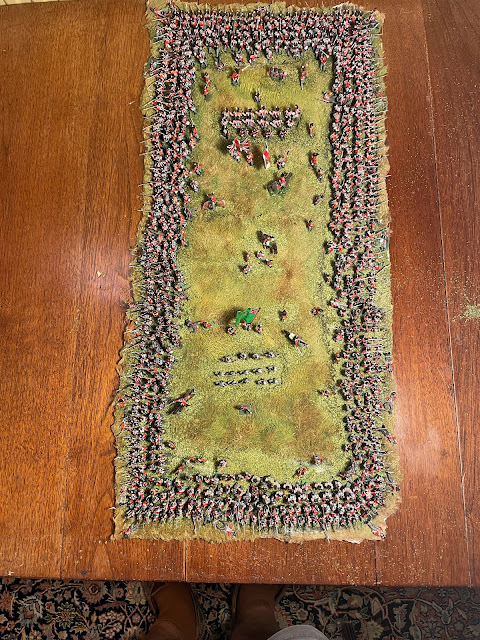 |
| Aerial view |
